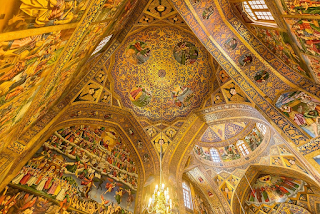Was Vartan Mamikonian of Chinese descent?
Yesterday, Sophene Books posted two excerpts on the Chinese origins of the Mamikonian clan from Pavstos Buzand’s and Sebeos’ Histories.
Cyril Toumanoff describes key differences between these accounts:
It has been recognized that passages from Faustus and Sebeos (along with Movses) are all part of the so-called Epic of the Iranian War, which has been preserved precisely in the above historical works and also in Agathangelos. It must also be presumed that the Epic, in this context, drew upon the family legend of the Mamikonians, which must have existed independently of it. Indeed, the version of the Epic found in Agathangelos does not refer to that legend, and Sebeos and Movses represent together a somewhat different version of the same tradition that Pavstos presents.
Thus, while Pavstos asserts the royal origin of their heroes, Sebeos and Movses make it distinguished indeed, but not royal: for the former, Mamik and Konak are brothers uterine of the [Chinese] Emperor and sons of the highest dignitary of the Empire, but for the latter Mamgun [as named by Movses Khorenatsi] is merely the Emperor’s foster-brother. In Pavstos it is stated that the Mamikonians were in Armenia from ancient times. On the other hand, both Sebeos and Movses place the arrival of the Mamikonians in Armenia in the third century after Christ.
According to Pavstos, the cause for leaving China was a struggle in the imperial family; but Sebeos gives as the cause a revolt against the Emperor, and Moses a denunciation before him. Pavstos speaks of the arrival in Armenia as directly from China. But both Sebeos and Movses mention a preliminary arrival in Iran and the Great King’s anxiety to keep peace with the Emperor of China as the reason for the subsequent removal to Armenia. No prenomen of the émigré ancestor is given by Pavstos, while Sebeos has Mamik and Konak (for two brothers), which is an obvious splitting of the nomen gentilicium of Mamikonean, and which Movses alters to Mamgun.
There can be no serious doubt that the Mamikonian legend concerns China, but this is not to say that the legend must be true.
For more on the Mamikonian family, see Garsoian's article for the Encylopedia Iranica.


Comments
Post a Comment